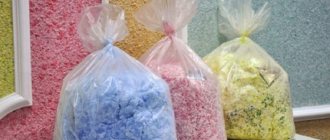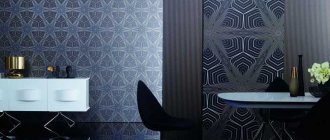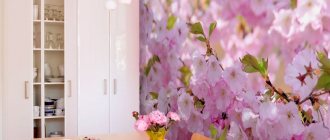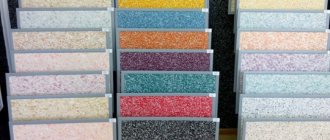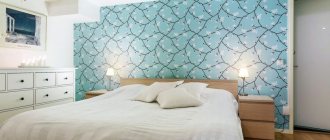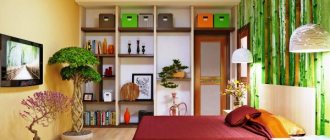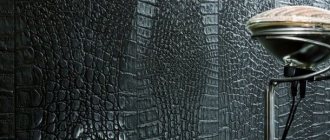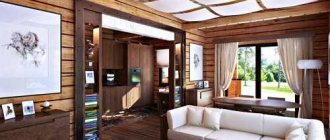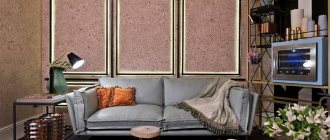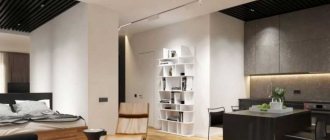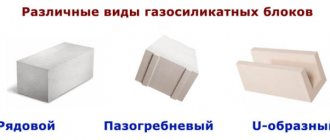What is liquid wallpaper
In its modern interpretation, this material differs from its distant predecessor, invented by French masters. The very word “wallpaper” in the name does not strongly correspond to our idea of paper, vinyl or other types of rolled wallpaper.
Wallpapers that always look chic
The material for work is a dry powder mixture, packaged in bags, which may contain:
- wool;
- glitters;
- synthetic fibers;
- acrylic;
- cellulose;
- silk;
- cotton.
Initial view before choosing
This finishing method can be used in almost any room where there is no high humidity. We conclude that this option is not suitable for the bathroom.
The surface after application is smooth and without nicks
The texture of the wall treatment is created by diluting the dry component with water. The resulting adhesive mass has the ability to be well distributed over the surfaces of walls or ceilings. In this case, the coating layer turns out to be quite thin, about 0.2-0.3 cm. Externally, the surface looks solid, without visible joints or seams.
How to apply liquid wallpaper correctly
- The prepared diluted solution needs time to infuse, approximately 24 hours, after which it must be thoroughly stirred.
- The wall must consist of one batch, otherwise the transitions will be visible.
- It is best to stir with your own hands, because a construction mixer spoils the structure and appearance of the wallpaper.
- The solution is applied only with a metal spatula.
Remember, the finished wall needs 3 days to dry completely.
Advantages of using the material
The type of design must take into account the coverage. It is tactilely pleasant, creates a cozy homely atmosphere, looks warm and pleasing to the eye.
Atmosphere of comfort and beauty
Breathability and sound insulation
This type of coating is not airtight. The mixture distributed over the surface allows the walls to “breathe”. This creates good air exchange.
Liquid ones contain various fibers. This allows you to maintain good sound insulation, dampening sounds, creating comfort.
Good sound insulation due to fibers in the composition
Safety and use in children's
The composition of the dry mixture is safe. It does not release harmful compounds into the air. In this regard, such a coating can even be used to decorate a children's room.
Liquid wallpaper is safe for children
Ease of application and care
Covering a wall with liquid wallpaper is not a difficult task. Even an inexperienced person without special skills can handle it.
To apply liquid wallpaper to the wall, it is not at all necessary to free up a large space - you do not need to roll out a roll of wallpaper on the floor, measure the dimensions and coat the panels with glue. Everything is much simpler here.
Wide choice of colors
If, after decorating the wall with the mixture, varnish is applied, then the surface can be washed. This is convenient to do, for example, in the hallway. But even without additional coating, wallpaper of this type does not attract dust and therefore does not require complex care.
Camouflaging minor wall imperfections
The texture of the material, which is created when it hardens, masks minor flaws in the walls. Significant irregularities cannot be hidden. After application, no joints will be visible, the coating will be uniform.
Rich look thanks to rich colors
Possibility of restoration work
If necessary, the wall can be repainted. This can be done at any time, even immediately after the mixture has hardened on the surface.
Very easy to correct if necessary
Are there animals or small children in the house who often damage the walls? In this case, liquid is one of the best options for covering walls, because the damaged fragment is so easy to restore. The same composition is used for this. When it dries well, no traces of repair will be visible at all.
Long service life
Liquid wallpaper contains selected components, for example, silk fibers, which impart strength and make the coating resistant to fading. The service life of liquid wallpaper is more than 10 years.
Due to their composition, they last a very long time
Versatility of coverage
You have a chance:
- choose the option of applying to the walls;
- choose a color scheme;
- use stencils.
This provides opportunities for creativity. Liquid ones can be selected for rooms:
- halls;
- bedrooms;
- children's;
- living rooms, etc.
Universal, suitable for any interior
Pasting wet wallpaper
It begins with the preparation of a decorative solution. It doesn't take much effort or preparation to dilute the mixture. It is necessary to adhere to several rules, which will be indicated below.
Dilution of the mixture
It starts with preparing a container with a minimum capacity of 10 liters. Otherwise, when the wallpaper swells, the solution will spill out. If you are mixing several packs at once, count on a container with a capacity of more than 20 liters.
The mixing process itself looks like this:
- Warm water with a temperature of about 32-38 degrees is poured into the container, then the dry coating mixture is added.
- The mixture is mixed by hand, without mixers (they can damage the silk fibers) until the clots and lumps disappear.
- The finished solution is covered with a film or a lid and left for 10-12 hours to dry (so that all microelements are absorbed).
- Before gluing, add 1 liter of water to the solution and mix again.
Applying wet wallpaper to the wall
The technology for applying wet wallpaper is very simple and begins with re-mixing the solution. Then take a small amount of the mixture with a spatula and carefully apply it to the wall. The coating is smoothed and evenly distributed over the area with a trowel or rubber brush. If applied correctly, the layers will be of the same thickness (about 2-3mm). You can also use a spray bottle for this work.
Using a grater, go over the finished area again (if you see problem areas by eye, wet the area and smooth it with a grater). This way the entire room is covered; for hard-to-reach places, use a brush. After completing the procedure, leave the room to dry for about 2-3 days.
Tips for gluing
You already know how to apply wet wallpaper; it wouldn’t hurt to study our tips. So:
- read the pack instructions before preparing the solution (some types need more or less water);
- the dry mixture is poured into the water, and not vice versa;
- decorative mortar is mixed manually, without the use of mixers;
- Be sure to wait 12 hours after cooking, the lack of swelling will be reflected on the wall.
Disadvantages of use
In addition to its advantages, this finishing material also has some disadvantages. It has a significant cost. It is higher, for example, than that of paper and vinyl wallpaper.
Despite their practicality and beauty, they are very expensive
This wallpaper is highly hygroscopic, which is good when removing coverings from walls, but is not at all suitable for decorating wet rooms in the house. There are also limitations in the flight of design ideas regarding the choice of shades.
Affordable luxury design
You can create a beautiful, and even luxurious, interior using this type of finishing. To do this, warm shades of classic colors are selected with spectacular golden components as a filler. Shimmering particles add warmth and exclusivity to the interior, especially if their beauty is highlighted by good lighting.
Luxurious living room interior
Golden and shimmering particles in the design are an effective technique. The main thing is only to observe the measure regarding their quantity.
The original porous texture has good breathability, which allows you to retain heat and prevent fogging. In this case, the surfaces take on an unusual appearance.
Decorating a corridor with liquid wallpaper
It may seem that such a covering would not be the best option for a corridor or hallway. But it is not so. When a transparent varnish is applied on top, the walls receive the necessary coating strength.
For the corridor and hall, a design should be selected that will organically combine with the design of the rest of the premises.
An excellent solution to use such wallpaper in the hallway
Liquid wallpaper creates all the conditions for combination and goes well with various finishing materials:
- brickwork;
- wild stone;
- plaster stucco;
- textured plaster, etc.
Easy combination with many types of finishes
Monochromatic wall decoration is the epitome of elegance and a sense of proportion. But in some rooms this approach may seem boring and uninteresting.
To liven up the interior, you can add stripes or more complex patterns. In the embodiment of your imagination, you can easily combine different colors of liquid wallpaper with each other, combine it with other finishing materials, or use it only to create drawings.
Create complex designs for a more dramatic look
These can be either individual lines or entire patterned fragments that can be arranged:
- vertical;
- horizontally; inclined;
- waves;
- abstract patterns;
- spirals, etc.
Do you have a small hallway? Then pay attention to the light shades of liquid wallpaper. Dark ones may seem more practical, but they have the ability to influence the perception of the room. It will seem smaller, darker and more uncomfortable, which is not at all desirable.
Universal shades in design are:
- beige;
- golden;
- gray tones;
- peach.
Universal beige shade for finishing
If possible, it is advisable to equip the corridor and hallway, which in most cases lack natural light, with sources of additional lighting.
Kitchen: appropriate or not
For the kitchen, many people prefer combining vinyl wallpaper with tiles to decorate the apron. Very often, wallpapers are selected that contain designs depicting fruits, flowers or kitchen utensils. This design is not to everyone's taste. As well as monochromatic coloring.
Design in cool colors for the kitchen
An alternative option would be to paint with liquid wallpaper. They allow you to highlight the kitchen walls with a suitable shade that would harmonize with the furniture and decor. The color scheme allows this.
An unusual texture can become a real highlight of the interior. What to do with the kitchen apron area, because liquid ones will not withstand aggressive cleaning?
The solution may be to install glass only in the kitchen apron area. This technique will preserve the integrity of the design and prevent excessive contamination of the surface of the walls near the stove and sink.
For the kitchen you need to choose the color of the wallpaper. It is necessary to take into account the colors of furniture facades and tabletops, the type of curtains on the windows and the style of the room itself.
Be sure to combine wallpaper with the entire kitchen style
Stylish wet wallpaper: photo
Modern wet wallpapers are presented in a wide range, so everyone can easily choose the desired option.
Modern manufacturers present many different options for wet wallpaper
In particular, it is worth highlighting the wallpaper:
- French;
- Turkish;
- Russian;
- Danish made.
Article on the topic: Interior and “room” partitions in the interior (35 photos)
Wet wallpaper produced in France is characterized by quite rich colors and contains only natural ingredients and high-quality bright dyes. It is quite possible to apply such wallpaper on almost any surface, and in order to increase its moisture resistance, it is advisable to additionally cover it with a layer of varnish. Turkish liquid wallpaper is in no way inferior in quality to French products, but has a much lower cost. Russian wet wallpaper is more viscous in its consistency, which allows it to be used not only as a decorative covering, but also as a means for leveling walls.
Wet wallpaper produced in Denmark is characterized by the fact that the mixture, already diluted with water, is uniformly white in color. It is quite possible to add various coloring components and decorative elements to it, thereby creating an excellent color scheme. Caring for such coatings is quite simple; they can be easily wiped with a damp cloth, as well as cleaned with a vacuum cleaner. If stains form on the surface, it is quite possible to remove them using any stain remover.
Living room: bright accents
For the living room, you can choose not only bright shades, but also muted ones. Liquid wallpaper can be combined here with other finishing materials. This finish makes it possible to decorate the entire wall, highlight only a fragment in the recreation area, or use it for all surfaces.
You can mix several shades to achieve unexpected creative effects.
Bright finish by combining several colors
It is not advisable to combine liquid wallpaper with regular wallpaper. Because of this, they can lose all their individuality and “get lost” against the background of other finishes.
Bedroom: severity or boudoir bliss
For this room, calm shades interspersed with silver and gold will highlight part of the wall, for example, the headboard. This creates an original accent in the design.
Choosing to match the main style
Some types of liquid wallpaper contain natural silk. Its noble shine creates the impression of textiles on the walls and gives a feeling of royal luxury. In addition to a single-color finish, liquid wallpaper makes it possible to create entire landscapes, for example, with a sunset and sea surf.
Good mood with bright moments
In addition to similar effects, liquid ones can serve as a room zoning tool. This technique will be good not only for the bedroom, but also for the living room and for the nursery.
Recipe for making liquid wallpaper with your own hands
Our article reveals a great secret - the secret of preparing homemade wallpaper with a liquid consistency. This recipe proves that high cost is not a death sentence if you decide to use liquid wallpaper in the interior. So, the mysterious recipe:
1. Cut plain paper (old drafts, newspapers, etc.) into small pieces of about three centimeters.
How to create an original photo collage with your own hands - the best ideas with photos and videosWallpaper design - 170 photos of new products from the 2021 catalog
Wall decoration with fabric - 100 photos of elegant interior design
2. Select a container for diluting the solution, put pieces of paper in it, and fill it with water. Water should completely cover the paper, but excess of it is not recommended. Leave the paper for four hours to soak.
3. Using a construction mixer, grind the paper into a homogeneous solution.
4. Add the required color, plaster, glue, move everything carefully. Sand, glitter and other elements are added for decoration.
5. Using an iron spatula, apply a layer of five millimeters to a dry, pre-prepared surface and allow to dry.
Wallpaper on the ceiling
The ceiling is a complex plane from the point of view of ease of design. Making it look decent, or better yet, beautiful, can be a difficult task.
Liquid ones can be used both on a flat ceiling surface and on a multi-tiered one formed using plasterboard. The use of plaster stucco molding will create an additional decorative effect, as will the patina of the relief parts of the decor.
Ceiling decoration with liquid wallpaper
VIDEO: How to apply liquid wallpaper to a wall
How to apply liquid wallpaper to a wall
Liquid wallpaper for walls (+150 Photos). How to apply, advantages and disadvantages of the material
Liquid wallpaper application technology
If you have absolutely no experience working with such material, try applying liquid wallpaper from the place where the furniture will later stand. Try to take into account the volume of the first batch, which should correspond to the selected area. If the wallpaper does not stick well to the wall, you need to add a little water.
You can apply liquid wallpaper in two ways: using a spatula and using a sprayer. Liquid wallpaper is easy to apply using a spatula, but this process takes quite a lot of time. For this application, you need two spatulas: a wide one (with its help you will apply wallpaper on the walls) and a narrow one (for applying the working mixture onto a wide spatula). ,The spatula should be held at a slight angle. The wallpaper should not be pressed down too much, as a relief surface may not be formed, and the material consumption will be colossal.
You can start working from anywhere. Each new layer must be applied in the direction from a clean section of the wall towards the existing layer. The layer should not be too thin, as the wall may be visible. Liquid wallpaper should be applied to the entire wall. But if the wall is large, then the drying edge of the previous section should be lightly sprinkled with water. With this maneuver, the transitions will not be noticeable.
After you are finished applying the material, go over the surface of the wall with a spray gun. This coating will dry for at least a day.
